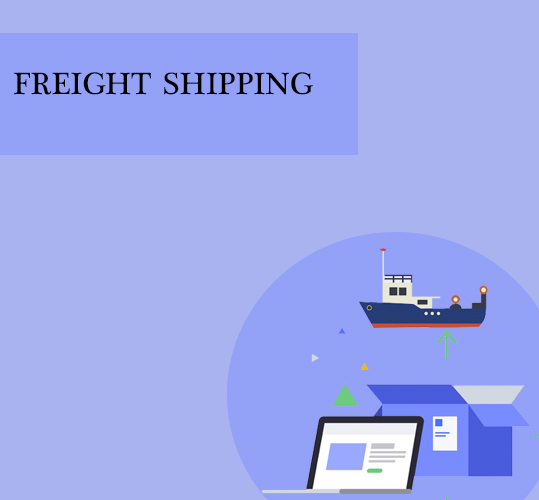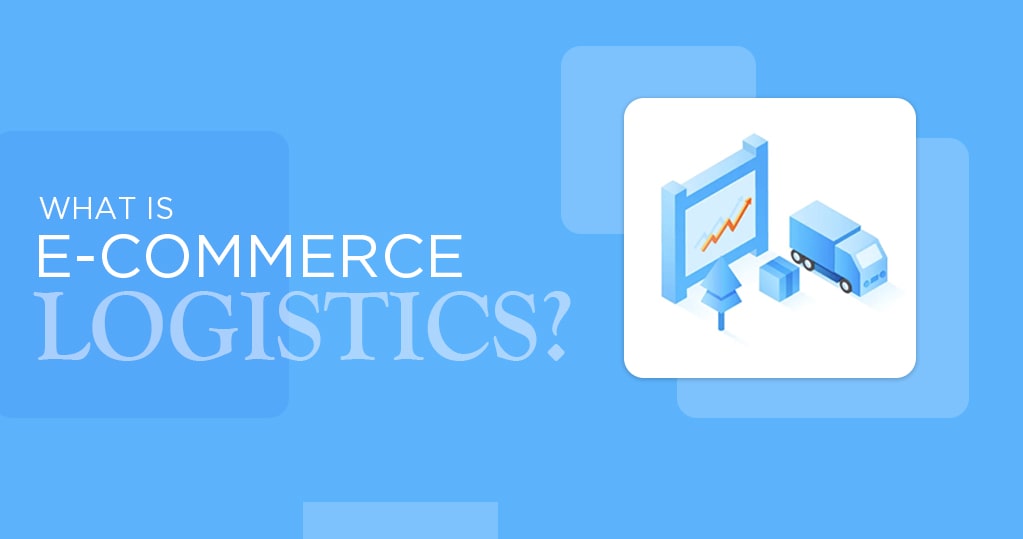As an ecommerce entrepreneur, you’ll need to acquaint yourself with logistics. Back-end inventory network management is a basic part of any business today; however, that is particularly the situation in ecommerce. Since you can’t allow the physical customer to your house inventory, you host to depend on third parties to help store and ship your products and managements. This is urgent for fundamental time management — and your main concern.
What is logistics?
Logistics is the management of how assets are gotten, put away, and transported to their delivery locations. The arrangement, execution, and control of the development and organization of these products and enterprises should all happen inside a given framework that is intended to accomplish explicit targets, which may fluctuate by industry. From the perspective of progressively full-scale, logistics management involves a couple of steps:
- Finding and distinguishing potential providers and wholesalers
- Deciding their availability and adequacy as far as business creation
- Shaping connections and finding the most practical answers for your business
Bigger organizations regularly work with various parties to keep pace with the demands. Be that as it may, your private company doesn’t need to join forces with various associations to deal with your ecommerce site logistics. On the offset, your activity is sufficiently small. You can work with neighborhood organizations and associations to ship and store your products.
How does ecommerce logistics work?

A logistics organization works in two ways:
- Forward Direction – Distribution and conveyance of products to purchasers.
- Reverse Direction – Exchanging or substitution of faulty, harmed, or wrong shipments.
Both these procedures become simple if logistics is overseen and constrained by an ecommerce organization.
Working in the forward direction
- Accepting the demand on an ecommerce store
- Giving a payment alternative
- Getting ready inventory
- Bundling the product
- Setting up its receipt
- Dispatching the demand
- Giving over the parcel to the courier organization
For an ecommerce organization, logistics in a forward way includes getting an online demand, arranging the product, bundling, setting up its receipt, preparing the invoice, dispatching, and conveying the product to the client’s doorstep. The time between getting the demand and its distribution relies upon the accessibility of the material and area of the agent. For explicit areas, a different conveyance charge could be appropriate. From the hour of dispatch until conveyance of a transfer, the merchant must tell the careful area of a shipment to its particular agent through following SMS or email warnings.
Payment assortment is basic for any ecommerce entrepreneur, similar to a retailer. An online retail organization ought to have various payment choices for better client experience, for example, charge/Visas, bank moves, and COD.
Working in reverse direction
Regardless of the best endeavors, the potential outcomes of off base or harmed shipments can’t be precluded. In such circumstances, a proficient reverse logistics is fundamental. Logistics must reclaim these flawed or harmed materials and replace them with legitimate demand that fulfills the client within a sensible time. An issue-free trade or substitution process go far in building trust between the purchaser and an ecommerce organization.
Relational relationship
For any logistics or online retail organization, the client relationship is basic. This relationship is set up by delivery boys who are the essence of an ecommerce organization to purchasers. Delivery boys should consistently be respectful and tolerant of clients. Consideration must be paid to protests with confirmations of redressing them soon. It is prudent to have delivery boys with a merry disposition.
The evolution of ecommerce logistics
Ecommerce logistics models
In developed economies, ecommerce logistics speaks to the most recent enormous driver of progress in logistics and physical distribution systems, which have advanced considerably in recent years or somewhere in the vicinity. As of now, it remains the case that ecommerce keeps on developing. Most of the shipping service providers, especially multi-channel shippers, are still just barely starting to work out what this will involve for their dispersion network frameworks.
How about we perceive the evolution of logistics
- From a dispersion property point of view, this development has gone through different general stages and events
- During the 1970s, most retail locations were renewed by direct conveyances from providers or wholesalers.
- During the 1980s, retailers began to bring together their store conveyances through new dispersion focuses, which they controlled.
- During the 1990s, worldwide sourcing took off, with numerous retailers creating import focuses on getting and processing, for the most part, containerized imports.
- From around 2000, online business started to quickly extend with unadulterated play retailers driving the route in building up e-fulfillment dissemination systems
Ecommerce logistics in developed markets

In developed economies, the development of online retail has been more grounded in segments, for example, design, electrical and ICT products, rather than food. In the previous, where acquired things are normally disseminated employing a postal, parcel or freight network, ecommerce logistics models have prompted an influx of new interest for four particular sorts of logistics capacities:
- Super e-fulfillment focuses on where the product is loaded and picked at the product level. These offices, which are either worked by the retailer or a logistics specialist organization, are commonly 500,000 sq ft to one million sq ft in size, or significantly bigger. They regularly work every minute of every day.
- Parcel center points/sortation focuses which sort arranges by zipping or postcode with the goal that they can be conveyed to the significant package conveyance community for conclusive conveyance to the client’s home or assigned assortment point.
- Parcel conveyance focuses which handle the ‘last mile’ conveyance to the client
- Consistently coordinated innovation where shopping baskets associate through API, web XML or some other association with a transportation the executives framework, so customers are getting the careful value statement of delivery of bigger things more appropriate for not exactly truckload modes, as these interesting products for logistics, for example, a TMS, must achieve alongside the shopping basket for better management:
- Capacity to sort out and track shipment regardless of the mode
- Online demand status and documentation
- Online dispatch documentation and receipt, for example, a bill of filling and cargo receipt
- Auto-update for payments
- Consistent interface with existing SCM or ERP framework
- Online cautions for basic data through content or portable
- Data frameworks provide details regarding past information investigation, conveyance history, and so forth.
These kinds of internet business logistics frameworks, in light of the above contemplations, guarantee the accompanying advantages to shippers, clients, and 3PL specialist organizations:
- Improved correspondence
- Straightforwardness into the inventory network
- Improved consumer loyalty
- Cost decrease
- Improvement ineffectiveness
- On-time conveyance
We will go further into the advantages of setting up a viable e-logistics structure and activity in this continuous arrangement. Notwithstanding, these are the top interesting points when hoping to set up a program.
With Ecommerce in the Equation, Let’s investigate Supply Chains, Then and Now (AKA, The Amazon Effect)
It’s been near a long time since Jeff Bezos opened his online book shop from a 400-square foot carport in Seattle. Today, Amazon is perhaps the biggest organization in America, with activities over the world and an inventory valuation more noteworthy than most Fortune 500 organizations. The idea, at first, was straightforward: to work together solely web-based, offering clients the comfort of shopping from home and giving the merchant minimal overhead expenses.
Since ecommerce was conceived, everything has changed: the multiplication of the Internet in our day-to-day life, the appearance of the online spaces, the speed of our web interactions, even who is getting on the web and how they’re arriving! Comfort and low costs were the main thrusts for ecommerce in the good old days. Yet, today, with online business retailers taking into account each sort of product, management, and shopping experience, the test has moved. Here is a concise see how direct-to-buyer demand fulfillment has developed throughout the years to coordinate those difficulties.
Things being what they are, How have Supply Chains Evolved in an Ecommerce Logistics World?
At that point: Supply chains took care of old fashioned, physical retail, where products landed in distribution centers in mass, were moved around in beds and chose by the case, and were dispatched out to store in mass.
Presently: Ecommerce represents the special test of inventory landing in mass, yet requires a lot of care from that point – getting mass demands, at that point, reviewing and picking those SKUs as individual products. In this way, ecommerce retailers need to figure out how to institutionalize and synchronize business procedures to have constant access and understanding of inventory development. Frequently, with many providers, numerous distribution centers, and a broad number of offers channels, the odds of a lost demand are a lot higher.
In any case, demand fulfillment advances have incorporated the front-end and back-finish of online retail. The back-end process is currently a collective exertion because of mechanized programming and ongoing fulfillment information. The arrangement of significant touch-focuses in the inventory network has diminished wasteful aspects and had recognized excess procedures.
How has freight shipping changed in an ecommerce logistics world?

At that point: At the beginning of an online business, it was about the accommodation of demanding a product from home. There was no heading to the shopping center and no holding up in line, simply living and trusting that the parcel will be conveyed to your doorstep. Shippers still utilized snail mail and telephone calls to speak with clients, and demand conveyance times were in the weeks, not days. Free transporting turned into an instrument that got contenders’ clients since there weren’t numerous bearer choices, no extra costs (for example, deals charge) existed, and demand conveyance times were moderate at any rate.
Presently: E-trade dealers gather deals charge, fuel charges are a lot higher, and the ever-prominent free delivering is the most distant thing from allowed to retailers. Other than goliaths like Amazon, very few retailers have the assets to work different dispersion focuses on key areas and rather are going to outsider logistics specialist co-ops to arrive at their clients. The development of various transportation alternatives permitting clients more authority over the conveyance procedure than any time in recent memory, extending from just little parcel from USPS, UPS, and Fed Ex to now get bigger things through not exactly truckload modes. It’s never again about being the quickest rodent in the online business conveyance race. Rather, it is tied in with having the option to convey a demand at a time edge and value point that clients need.








